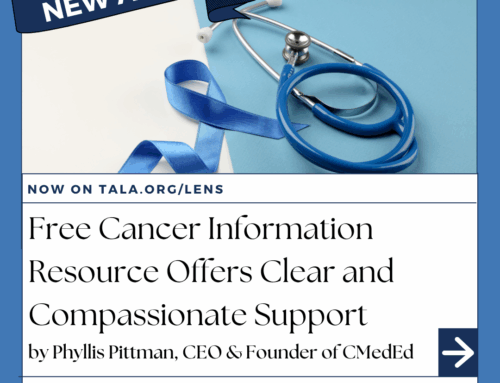Numerous recent articles have shared the costs of Long-Term Care, how people are paying for it, and how many cannot afford Long Term Care (LTC). The main source of much of this information is a 2023 analysis by the National Council on Aging and the LeadingAge LTSS Center at the University of Massachusetts Boston. Many national news outlets have picked up this story, however there are several other factors to consider when looking at the landscape of the industry and how it may change. What will not change, however, is the fact that when looking at monthly costs, Assisted Living continues to be the most cost-effective option.
Today’s Long-Term Care Costs
Argentum’s Value of Assisted Living for America report quotes the average monthly cost of assisted living at $4,500, nursing home at $9,034, and 24/7 home health aide at $19,656. A CNN article from this April quotes the National Investment Center for Seniors Housing and Care (NIC) stating that on average, it costs $5,806 per month for an assisted living facility, $10,830 a month to stay at a nursing home, while memory care (for Alzheimer’s and related dementia) comes in at around $7,500 monthly.
Between Government Assistance and Wealth
People that fall in the financial middle do not have enough money or assets to pay for long-term care, but they also do not meet qualifications for government support programs such as Medicaid. The Pew Research Center defines this group as having an annual household income between about $52,000-$156,000 annually in 2020 dollars for a household of three.
It is estimated that there will be 14.4 million middle-income seniors in the US by 2029, with 60% expected to have mobility limitations and 20% expected to have “high health care and functional needs.” These individuals will need some type of care, especially when trying to complete daily tasks with mobility and functional needs.
Covering Long-Term Care Costs
Medicare is a federal insurance for anyone over 65 and Medicaid is a joint federal and state program that provides health coverage to those with limited resources. Most senior living styles, including independent living and assisted living, are not covered by Medicare while nursing homes are eligible for coverage. In an Assisted Living setting, Medicare (or Medicaid, if someone is eligible) covers only medical costs incurred, such as medication management or on-site therapy, but not room and board. Private medical insurance does not cover long-term care costs. Long-term care insurance covers some costs, depending on the plan, and to receive benefits most require documented assistance with at least two ADLs.
Some life insurance policies offer advanced death benefits or a life settlement. Both options can help pay for long-term care costs. An advanced death benefit offers a tax-free payment while the policy holder is still alive. A life settlement involves selling a life insurance policy to a third-party for a sum, likely smaller than the full policy death benefit, but it can be used while the policyholder needs long-term care.
Veterans are eligible for a variety of benefits through the Department of Veterans Affair. Participants must be signed up for VA Healthcare and meet a handful of other requirements including demonstrating need for long-term care. The VA offers various options including services such as physical therapy through state or approved organizations, and care in settings such as assisted living, nursing homes, and more.
National Aging Trends
Last week, the Census Bureau released data demonstrating that the median age in the US reached a record high of 38.9 in 2022. In 1980 it was 30. The increase in the median age is being bolstered by low birth rates. The Census Bureau also estimates that older adults will outnumber children for the first time in US history sometime in the next decade. Also, Americans aged 65 and over will represent one quarter of the population. It is no secret that the US is aging, and these latest reports only confirm this trend.
Care Needs
According to the CDC, as of today, 60% of all Americans have one chronic disease while 40% have two or more. Underlying health concerns can lead to poorer health and increased frailty in older age, leading to a need for more functional support. Surveys show that at least half of Americans aged 55 and above have at least one unmet care need but feel conflicted about addressing those needs due to a desire to maintain independence. According to a 2022 research paper published by The Gerontological Society of America, 50% of older adults using professional home care are not getting all the help they need while individuals with dementia are twice as likely to have unmet needs.
The Covid-19 pandemic proved how important it is for anyone, especially seniors, to have a strong social life. Having a life that includes meaningful relationships with others has a significant positive impact on overall wellbeing. Older adults labeled as “socially frail” are at increased risk for poor health outcomes for many reasons. First, they do not have a strong system for emotional and mental health. Secondly, those considered socially frail are less likely to be able to rely on others for assistance getting care, such as transportation to appointments.
According to a CNN article from March, studies have shown that social frailty is correlated to physical frailty, increased risk of falls, disability, poor surgical outcomes, nursing home admission, and earlier death. People who are socially frail are more likely to be physically frail, and therefore, have less physiological strength and reduced physical resilience. We have all seen and experienced this in recent years the it is now more clear than ever that there is a connection between social frailty and other healthcare outcomes.
Cost Increases
A McKnights article from March shared research that indicated senior living providers of all care and service levels expect rents to increase in 2023, with the majority expecting a 5%-10% increase and a few expecting 15% or more. This is the second year in a row of raising rates in response to economic strains for many providers, who are feeling increased pressure. According to Altarum, which produces a monthly report on health sector economic indicators, nursing home care costs have been growing the fastest out of any major health sectors.
Conclusion
The next few decades will bring a tidal wave of change to the long-term care industry, as well as healthcare in general, as our nation continues to age. Steady amongst these changes is the utility and cost effectiveness of assisted living as a community-oriented place for seniors to be cared for, supported in their daily tasks, and encouraged to have a vibrant and socially engaged life.
Resources Used in this Article
https://www.houstonchronicle.com/living/article/what-if-you-can-t-afford-long-term-care-18151529.php
https://www.cnn.com/2023/04/20/health/senior-care-cost/index.html
https://health.usnews.com/best-assisted-living/articles/how-much-does-assisted-living-cost
https://www.forbes.com/health/senior-living/how-much-does-assisted-living-cost/
https://www.forbes.com/health/senior-living/how-much-does-assisted-living-cost/
The U.S. Population Is Older Than It Has Ever Been - The New York Times (nytimes.com)
https://www.elderlawanswers.com/study-reveals-unmet-needs-of-seniors-relying-on-in-home-care-19268
https://www.va.gov/health-care/about-va-health-benefits/long-term-care/



